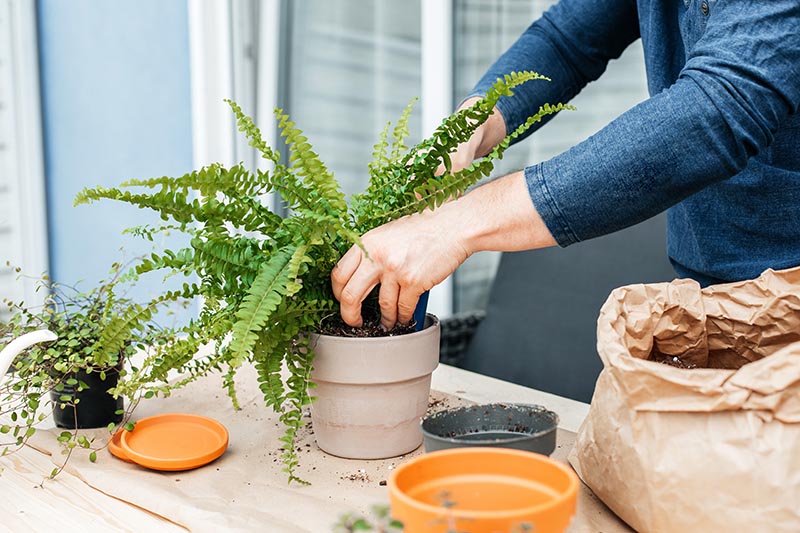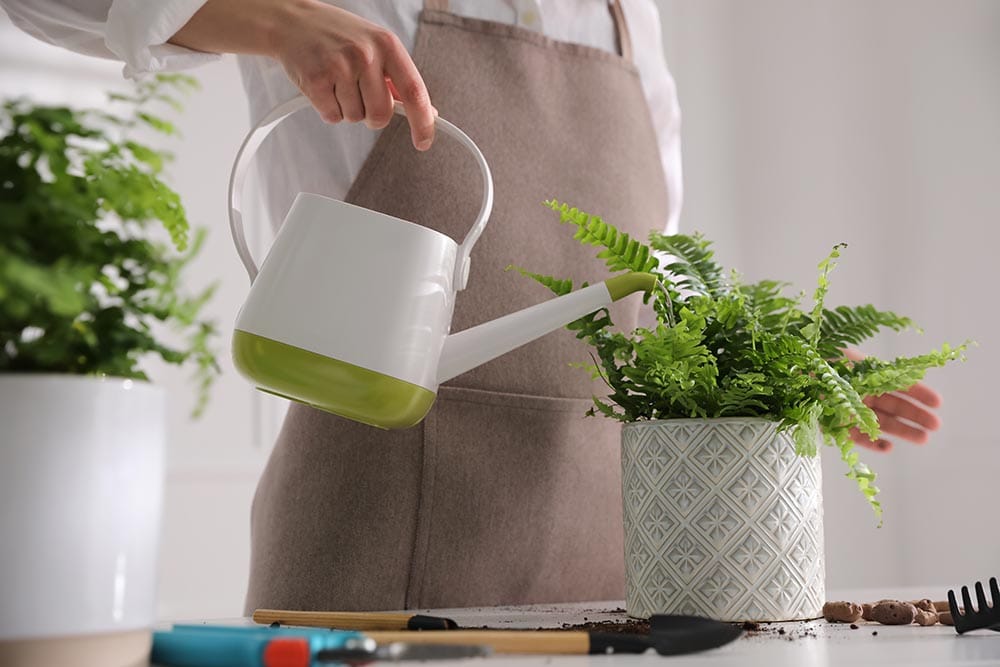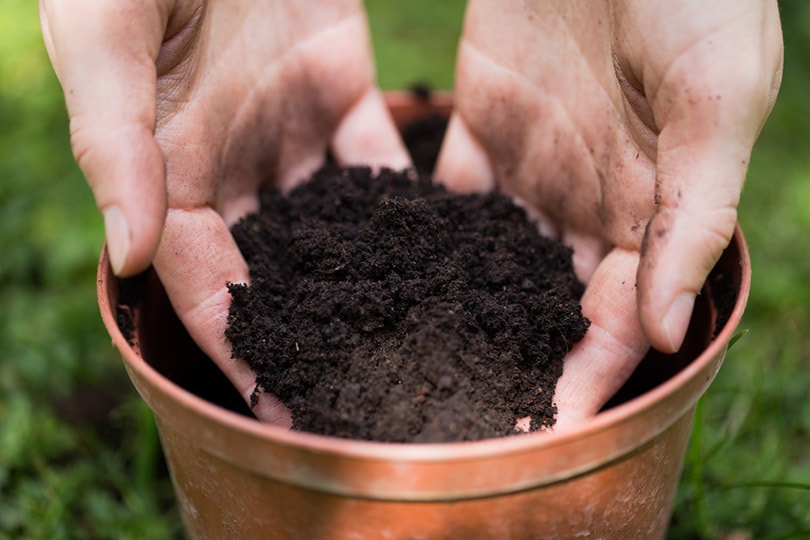How to Make Potting Soil for Ferns — 3 Simple Steps
-
Kristin Hitchcock
- Last updated:

Ferns are a pretty popular indoor plant. They first became popular during the Victorian era and have truly stood the test of time by remaining popular today. However, there are very many different types of ferns, and they all have different growing needs.
Often, ferns need a well-draining mixture. They are very similar to most other plants in this way. When planted in a pot, excessive water can sit around the roots and lead to root rot. Therefore, it’s vital that the water drains away quickly. To achieve this, you can make your own potting soil without much trouble. If you have many different potted ferns (or other plants), this is often the cheapest way to maximize drainage.
What Makes a Good Potting Soil for Ferns?

Before you can get mixing, it’s important to understand what a fern needs. As we’ve stated, ferns require a well-draining mixture. Often, adding coarse materials helps achieve this. Gravel, sand, and perlite are common materials added for drainage.
However, you can’t just add one of these materials. Ferns also need organic matter, which helps hold water and nutrients. While well-draining soil is important, only using coarse materials will lead to everything washing away. The most common organic materials used are peat moss, leaf mold, manure, ground sphagnum moss, and similar materials.
The soil also needs to be well-aerated. However, specific materials are not usually added to achieve this. Instead, aeration is often achieved through the use of a good coarse material.
The 3 Steps on How to Make Potting Soil for Ferns
1. Gather Some Basic Ingredients

The most basic fern potting soil contains equal parts sand, garden soil, and peat moss. You can purchase all of these materials from most garden supply stores. Be sure to purchase garden soil and not just remove some from your garden. Soil from the ground can contain parasites and diseases. Instead, you want to purchase soil that has been sterilized.
Be sure to use gardening sand—not just any sand. Other kinds of sand can contain chemicals or other ingredients that may not be safe for plants (or people).
You should also add about a teaspoon of lime per quart for most types of ferns.
Keep in mind, this is a typical fern mixture. Some ferns may have very specific requirements that differ from this mix.
Specific Fern Mixes
Some ferns do require slightly different ingredients for their potting soil. Here is a quick rundown of some common fern types and the best potting soil for them:
- Staghorn Fern: Use a mixture of peat moss, chopped moss, and oak leaves
- Rabbit Foot Fern: Mix ¼ pine bark, ¼ garden soil, ¼ peat moss, and ¼ sand
Most other ferns do fine on the common soil mixture. However, they may have specific fertilization guidelines to keep in mind.
2. Mix Your Ingredients Together
We recommend wetting all the ingredients and then mixing them together. Wet ingredients are often easier to mix thoroughly and make re-potting the plant easier. Plus, damp ingredients are less likely to release dust, which can be dangerous for the gardener.
3. Feel Free to Adjust the Soil

There are many reasons why you may want to adjust the soil, especially once you have some experience under your belt. Many gardeners have their own opinions about fern soils (and probably won’t be shy to share them with you). Plus, as we’ve reviewed, different types of ferns do have different requirements. Your environment may also play a role in your soil mixture.
Very humid environments may call for better-draining soil. Dry environments may call for very absorbent soil. The best way to determine what sort of soil you need is to keep tabs on your plant.
Common soil mixes that differ from what we outlined above include:
- ¼ pine bark, ¼ garden soil, ¼ peat moss, and ¼ sand
- Sphagnum moss instead of peat moss
- Rotted leaf mold (as this is what ferns grow in naturally)
Some gardeners often add a tablespoon of lime instead of a teaspoon. We recommend starting with a teaspoon and adding more if needed. You can always add more, but you can’t take excess lime out.
Other common ingredients include manure and charcoal. Both can be good ingredients for soil. However, once again, it largely depends on your needs.
Final Thoughts
Ferns aren’t typically very picky plants. However, they come in many different varieties. Luckily, most of these varieties need about the same potting medium. Therefore, you can often get away with a single mixture for all ferns.
While we have provided a standard potting medium that will work for most ferns, feel free to adjust the soil as needed. Not only are all ferns different, but all homes are different, too. Therefore, what works in one pot may not work in another. You’ll need to adjust accordingly if your home is particularly humid or dry.
Featured Image Credit: Elena Medoks, Shutterstock
Contents
